Tired of sifting through a sea of cumbersome gym equipment, searching for the ideal arm-toning workout? Well, get ready for a delightful change.
Bid farewell to those bulky weights and welcome the world of bodyweight training.
In this exhaustive guide, we’ll explore 25 exceptionally effective Calisthenics arm exercises that demand no equipment whatsoever.
Whether you’re a fitness aficionado, a novice eager to kickstart your journey, or someone craving a fresh and invigorating challenge, these workouts are tailored just for you.
Prepare to revolutionise your fitness routine, one bodyweight repetition at a time.
Table of Contents
Understanding the World of Calisthenics
What Exactly is Calisthenics?
Calisthenics, often hailed as the ultimate bodyweight workout, is the art of harnessing your own body as your gym.
No elaborate machines, no heavy weights – just you, your determination, and the force of gravity.
This dynamic fitness discipline encompasses a diverse array of exercises meticulously designed to boost strength, flexibility, and endurance while chiseling a sleek and well-defined physique.
In the realm of calisthenics, your body weight becomes the resistance you must conquer, rendering it an accessible and highly efficient fitness option for all.
It’s all about pushing and pulling, bending and stretching, all the while engaging multiple muscle groups to attain a seamless blend of power and mastery.
So, if you’re eager to liberate yourself from the confines of conventional gym routines, step into the world of calisthenics and experience the extraordinary potency of bodyweight training firsthand.
For a deeper understanding of calisthenics and its benefits, consider consulting reputable sources such as the American Council on Exercise (ACE) or the National Institute on Aging (NIA).
Benefits of Calisthenics Workout
Buckle up, as this fitness approach packs a punch with a plethora of advantages extending beyond mere muscle building.
Full-Body Engagement:
Calisthenics is like a symphony for your muscles. Unlike isolated exercises, it engages multiple muscle groups simultaneously, promoting a balanced and functional physique.
A study published in the “Journal of Strength and Conditioning Research” found that compound bodyweight exercises in calisthenics enhance overall muscle activation and coordination, fostering a more holistic approach to fitness.
Improved Functional Strength:
While lifting weights has its merits, calisthenics hone practical, real-world strength.
The body learns to work as a cohesive unit, translating to enhanced performance in everyday activities.
A study in the “Journal of Physical Education and Sport” demonstrated that calisthenics-based training significantly improved functional strength, particularly in movements related to daily life.
Infinite Versatility:
Calisthenics offers a vast repertoire of exercises, ensuring your workouts never become mundane.
From handstands to muscle-ups, there’s always a new challenge waiting.
This variety keeps motivation high, according to research in the “Journal of Sport and Health Science,” which highlighted the importance of variety in sustaining long-term exercise adherence.
No Equipment Necessary:
Bid farewell to overcrowded gyms and heavy equipment costs.
Calisthenics demands minimal to no gear, making it incredibly accessible.
A review in the “Journal of Exercise Science & Fitness” revealed that bodyweight exercises are not only effective but also economical and convenient, fitting seamlessly into busy lifestyles.
Enhanced Flexibility and Mobility:
Flexibility and mobility often take a back seat in traditional strength training, but calisthenics places a strong emphasis on these attributes.
Regular practice can lead to greater joint mobility and flexibility, as confirmed by a study in “Physical Therapy in Sport,” reducing the risk of injuries.
Calorie-Torching Workouts:
If you’re aiming to shed some extra pounds, calisthenics can be your ally. High-intensity bodyweight exercises like burpees and mountain climbers can torch calories and boost metabolism.
Research in the “Frontiers” suggests that high-intensity bodyweight workouts can lead to significant fat loss.
Mental Resilience:
Calisthenics isn’t just about physical prowess; it cultivates mental resilience too.
Achieving challenging movements can boost confidence and mental fortitude.
A study in the “Journal of Sports Science & Medicine” found that individuals who engaged in calisthenics experienced improved self-esteem and perceived their bodies more positively.
Why Opt for Calisthenics for Your Arms?
Firstly, it’s all about simplicity and effectiveness. Calisthenics arm exercises rely on your body weight as resistance, eliminating the need for fancy equipment or weights.
This means you can sculpt those biceps and triceps just about anywhere, whether you’re at home, in the park, or even on the go.
But it’s not just about convenience; it’s about results. Calisthenics engages multiple muscle groups at once, making your arm workout incredibly efficient.
Plus, it enhances your functional strength – that’s the kind of strength you use in everyday activities. So, not only will your arms look great, but they’ll also be primed for real-life tasks.
Now, let’s talk variety. Calisthenics offers a treasure trove of arm exercises. From classic push-ups to challenging handstand push-ups, there’s a move for every fitness level. This variety keeps your workouts engaging and your muscles guessing.
And here’s the kicker: you don’t need a gym membership or expensive gear. Studies have shown that bodyweight workouts like calisthenics are not only effective but also budget-friendly. Plus, they fit seamlessly into busy schedules.
Calisthenics Arm Workout (No Equipment)
Biceps Exercises:
Chin-Ups:
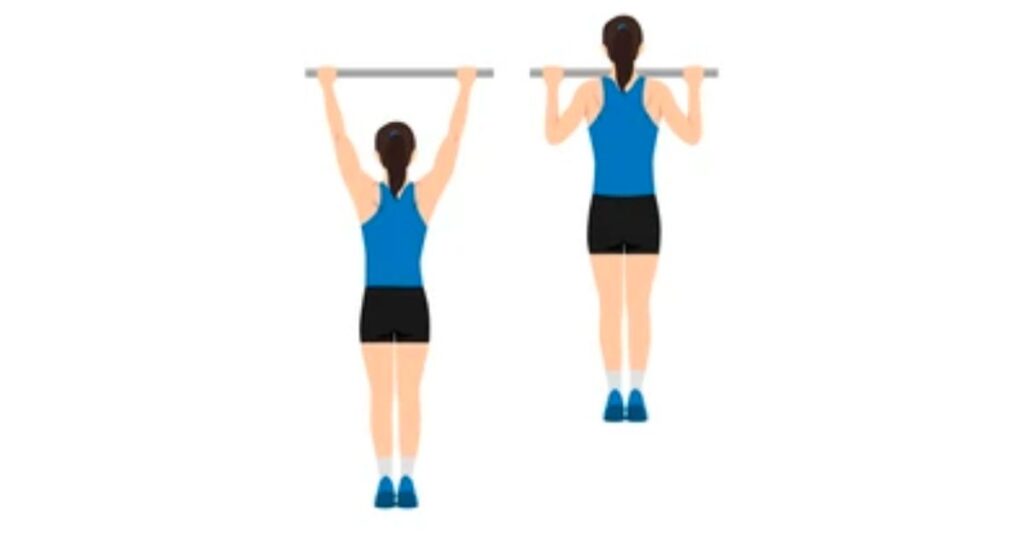
Steps:
- Hang from a pull-up bar with palms facing you.
- Pull your body up until your chin clears the bar.
- Lower yourself back down with control.
Benefits:
- Engages both biceps and upper back muscles.
- Improves overall upper body strength.
- Enhances grip strength.
Close-Grip Chin-Ups:
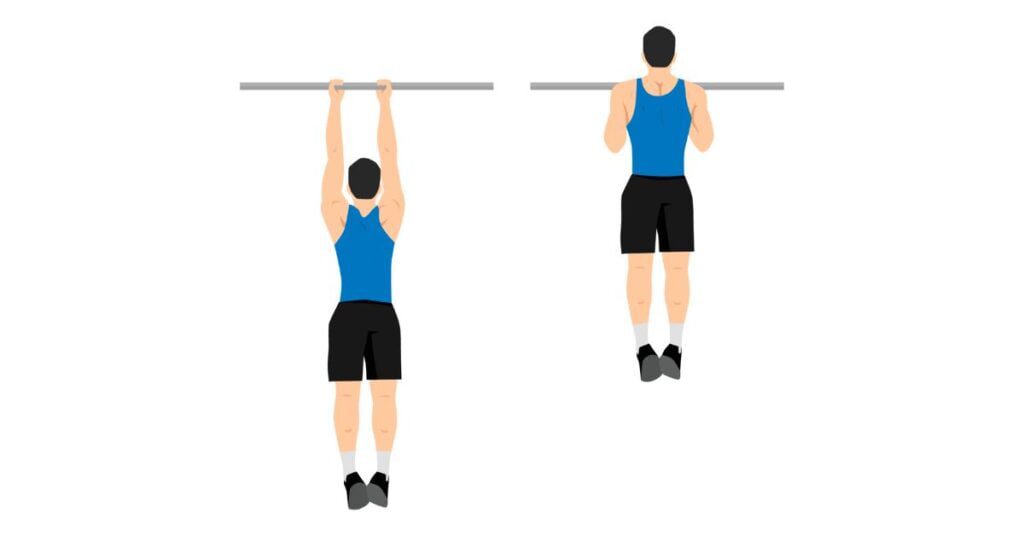
Steps:
- Perform chin-ups with your hands close together on the bar.
- Keep your palms facing you.
- Pull your body up until your chin clears the bar.
- Lower yourself down under control.
Benefits:
- Focuses on the biceps and emphasizes the brachialis muscle.
- Enhances bicep definition.
- Strengthens the upper back and core.
Negative Chin-Ups:
Steps:
- Stand on a platform or jump to the top of a chin-up position.
- Slowly lower your body down from the bar.
- Use a controlled, deliberate motion.
Benefits:
- Builds bicep strength during the eccentric (negative) phase of the exercise.
- Helps in developing control and muscle endurance.
- Ideal for those working toward their first full chin-up.
Isometric Bicep Holds:
Steps:
- Hang from a pull-up bar.
- Pause at the top position of a chin-up, with your chin over the bar.
- Hold this position for as long as you can.
Benefits:
- Enhances bicep endurance and isometric strength.
- Aids in developing mental toughness.
- Can be incorporated into a grip-strengthening routine.
Towel Curls:
Steps:
- Hang a towel over a pull-up bar.
- Grab the towel with both hands, palms facing each other.
- Curl your body up using the towel as resistance.
- Lower yourself down slowly.
Benefits:
- Isolates the biceps effectively.
- Provides a unique grip challenge.
- Strengthens the forearm muscles.
Archer Pull-Ups:
Steps:
- Perform a wide-grip pull-up.
- As you pull up, lean to one side, extending the opposite arm straight.
- Return to the center as you lower yourself down.
Benefits:
- Introduces an element of instability and requires core engagement.
- Targets the biceps from different angles.
- Enhances overall upper body mobility.
Towel Hammer Curls:
Steps:
- Hang a towel over a pull-up bar.
- Grab the towel with both hands in a neutral (hammer) grip.
- Curl your body up using the towel for resistance.
- Lower yourself down under control.
Benefits:
- Focuses on the brachialis muscle and forearms.
- Develops grip strength and forearm endurance.
- Offers a variation to traditional curls.
L-Sit Pull-Ups:
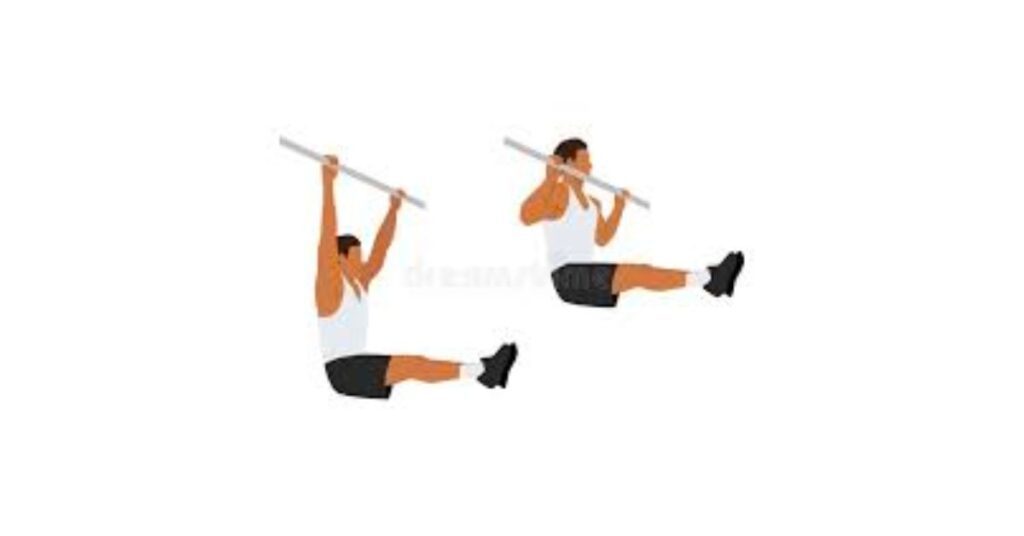
Steps:
- Hang from a pull-up bar.
- Lift your legs, keeping them straight, to form an “L” shape with your body.
- Perform pull-ups with your legs in the L-sit position.
Benefits:
- Engages the biceps, core, and hip flexors simultaneously.
- Enhances overall upper body and core strength.
- Challenges stability and balance.
Australian Pull-Ups:
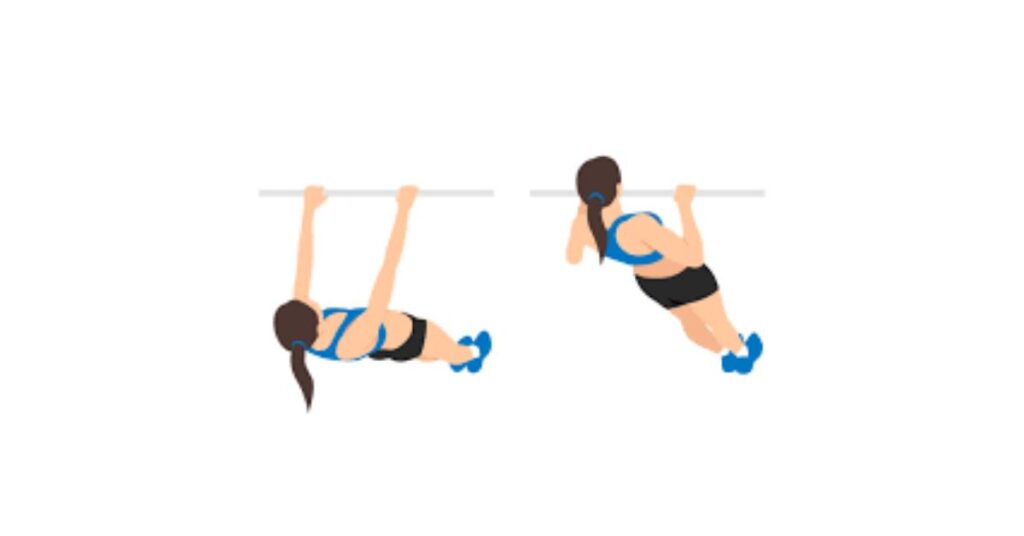
Steps:
- Set up beneath a horizontal bar.
- Grab the bar with palms facing you.
- Walk your feet forward so your body is at an angle.
- Pull your chest up to the bar.
Benefits:
- Targets the biceps and upper back.
- Allows for scalability, making it suitable for all fitness levels.
- Develop strength for full pull-ups.
Concentric Curls:
Steps:
- Hang from a pull-up bar with palms facing you.
- Curl your body up by contracting your biceps.
- Lower yourself back down under control.
Benefits:
- Focuses on the concentric (positive) phase of the chin-up.
- Isolates the biceps effectively.
- Enhances bicep strength and definition.
Triceps Exercises:
Tricep Push-Ups:
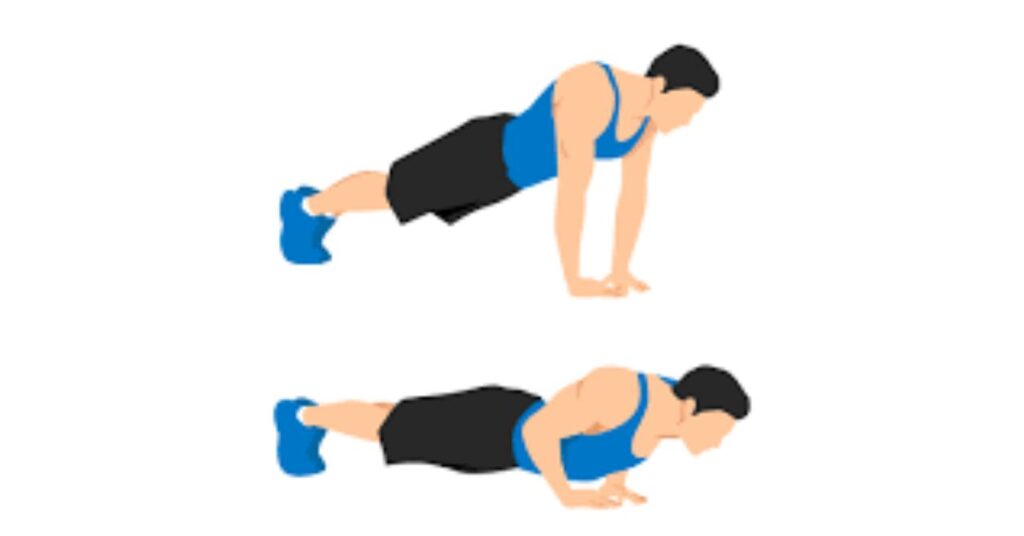
Steps:
- Start in a push-up position.
- Place your hands close together under your shoulders.
- Lower your body, keeping your elbows close to your sides.
- Push back up to the starting position.
Benefits:
- Targets and tones the triceps effectively.
- Engages the chest and shoulders as secondary muscles.
- Enhances overall upper body strength.
Tricep Bench Dips:
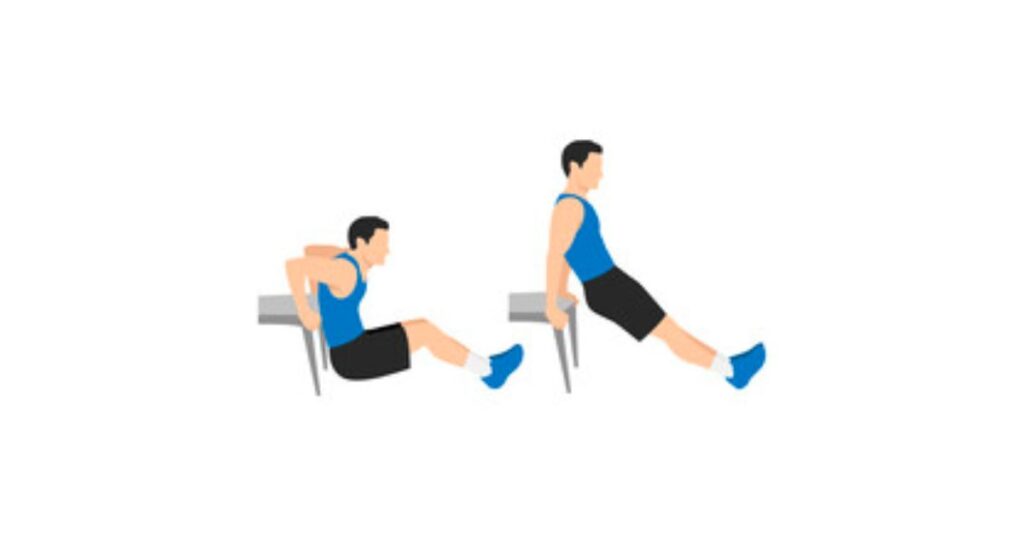
Steps:
- Sit on the edge of a bench or chair.
- Place your hands next to your hips, fingers facing forward.
- Slide your hips off the bench and lower your body.
- Push back up to the starting position.
Benefits:
- Isolates the triceps for a powerful workout.
- Improves tricep strength and definition.
- Can be done anywhere with an elevated surface.
Close-Grip Push-Ups:
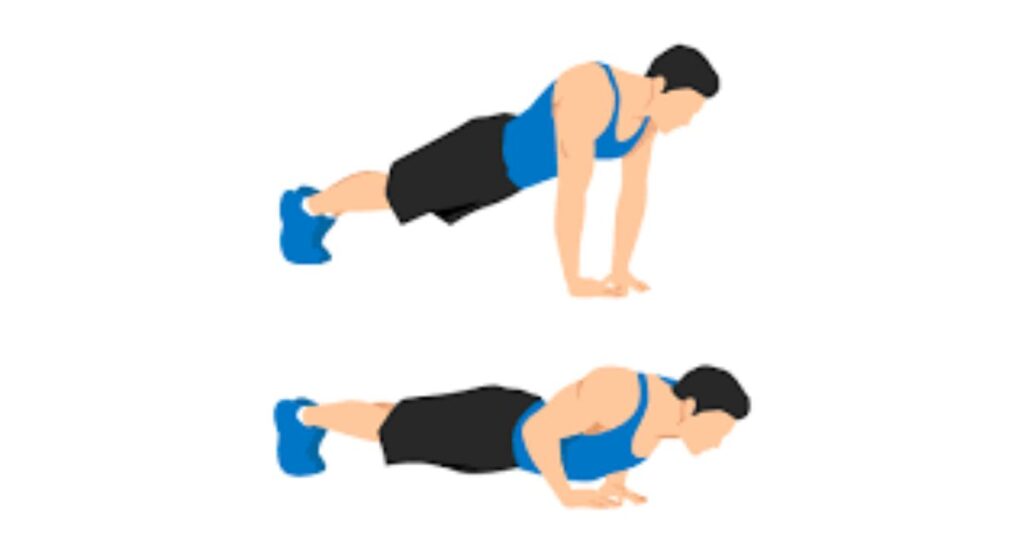
Steps:
- Get into a push-up position.
- Place your hands close together under your chest.
- Lower your body while keeping your elbows close to your sides.
- Push back up to the starting position.
Benefits:
- Emphasizes the triceps and chest muscles.
- Boosts tricep strength and endurance.
- Provides a challenging variation of the classic push-up.
Plank Tricep Extensions:
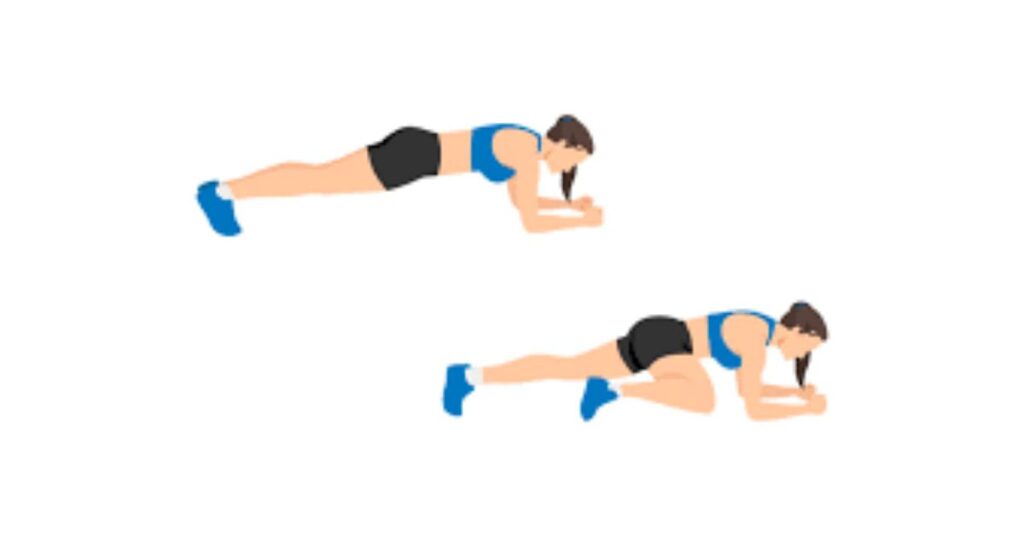
Steps:
- Begin in a forearm plank position.
- Push up onto your hands, one hand at a time.
- Return to the forearm plank position, alternating arms.
Benefits:
- Engages the triceps and stabilizes the core.
- Enhances tricep strength and shoulder stability.
- Adds an element of balance and coordination.
Tricep Diamond Push-Ups:
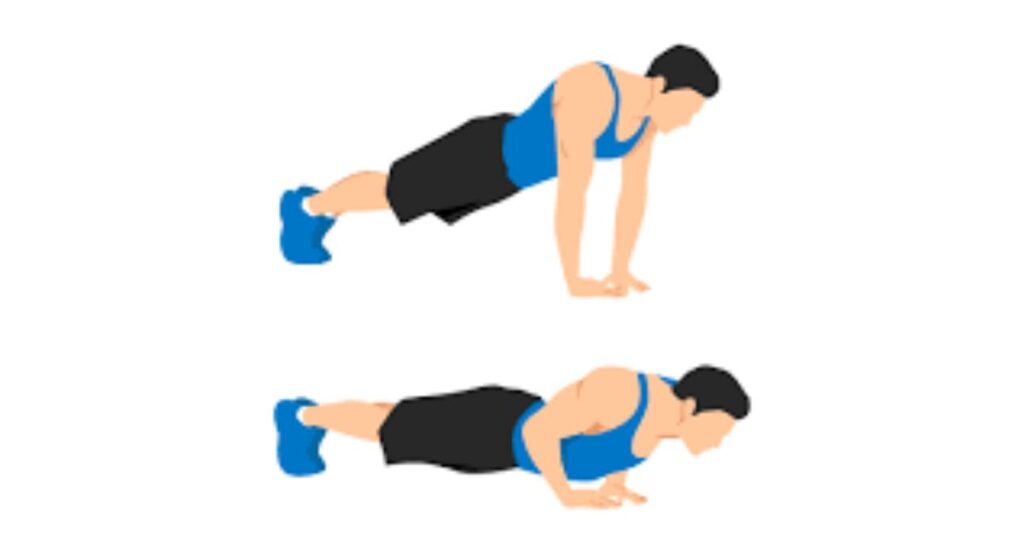
Steps:
- Get into a push-up position.
- Form a diamond shape with your hands directly under your chest.
- Lower your body, maintaining the diamond hand position.
- Push back up to the starting position.
Benefits:
- Focuses intensely on the triceps.
- Tones the chest and shoulders.
- Strengthens the core and improves balance.
Tricep Bench Holds:
Steps:
- Sit on a bench or chair with your hands placed next to your hips.
- Lift your hips off the bench, supporting your body with your hands.
- Hold this position, engaging your triceps and core.
Benefits:
- Targets the triceps and core stability.
- Improves tricep endurance.
- Enhances upper body strength.
Crab Walks:
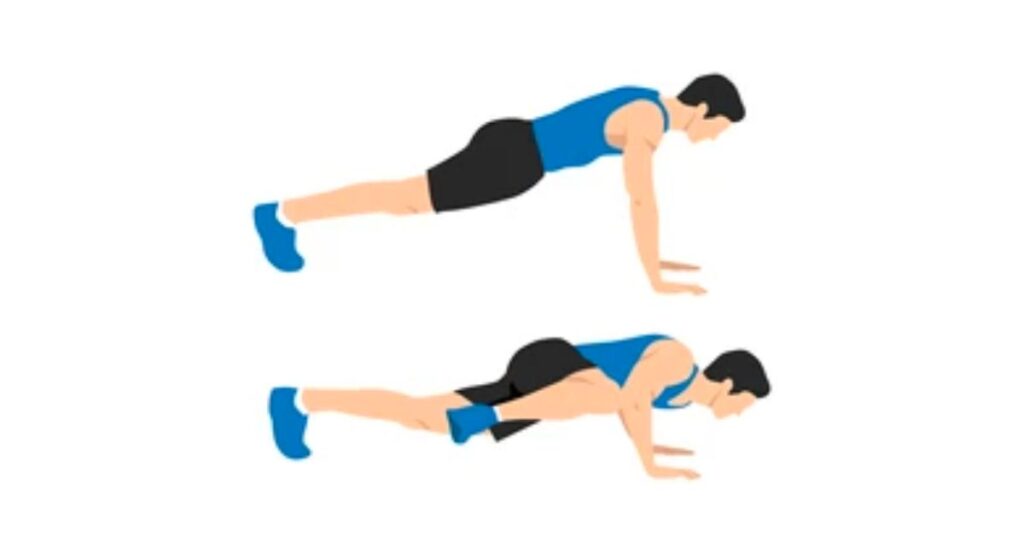
Steps:
- Sit on the floor with your hands behind you and knees bent.
- Lift your hips off the ground, creating a tabletop position.
- Walk forward using your hands and feet, engaging the triceps.
Benefits:
- Works the triceps and entire upper body.
- Increases shoulder and core stability.
- Develops functional strength for activities like crawling.
Diamond Cutter Push-Ups:
Steps:
- Assume a push-up position with your hands forming a diamond under your chest.
- Lower your body, keeping the diamond shape.
- Push back up to the starting position.
Benefits:
- Concentrates on the triceps and chest.
- Enhances tricep strength and chest definition.
- Offers a challenging variation of the push-up.
Reverse Plank Tricep Dips:
Steps:
- Sit with your legs extended and your hands behind you, fingers pointing backward.
- Lift your hips off the ground.
- Lower your body by bending your elbows, then straighten them to return to the starting position.
Benefits:
- Isolates the triceps while engaging the entire upper body.
- Builds tricep strength and shoulder stability.
- Enhances flexibility in the shoulders and chest.
Tricep Box Push-Ups:
Steps:
- Place your hands on a box or elevated surface.
- Get into a push-up position.
- Lower your body, then push back up.
Benefits:
- Targets the triceps and upper body muscles.
- Provides a scalable option for different fitness levels.
- Enhances tricep strength and push-up proficiency.
Tricep Push-Ups on Fingertips:
Steps:
- Perform push-ups while balancing on your fingertips.
- Lower your body and push back up, maintaining fingertip contact.
Benefits:
- Intensely work the triceps and forearm muscles.
- Enhances grip strength and finger dexterity.
- Builds impressive tricep strength and definition.
Sphinx Push-Ups:
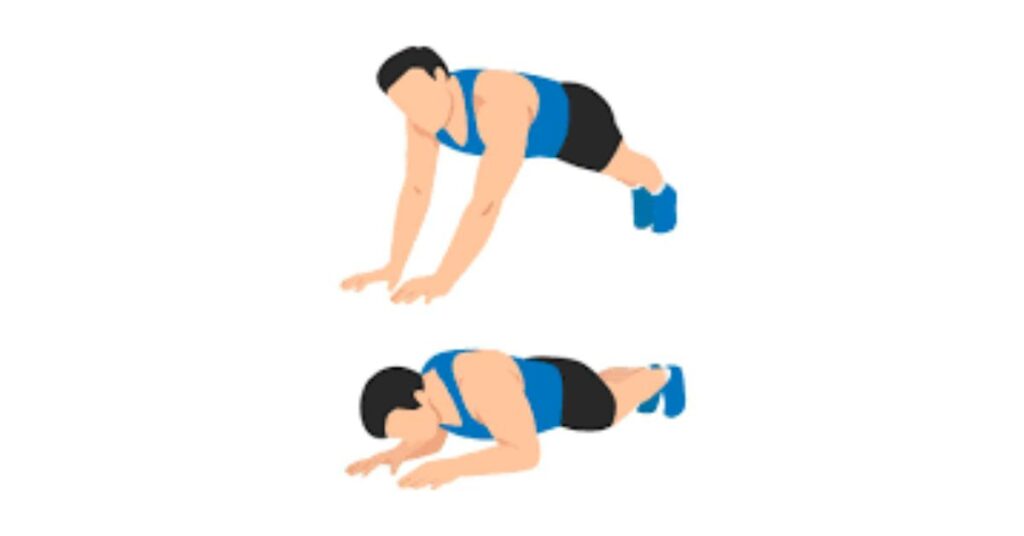
Steps:
- Start in a forearm plank position.
- Push up onto your hands while keeping your forearms on the ground.
- Lower yourself back down.
Benefits:
- Focuses on triceps and core stability.
- Enhances tricep strength and shoulder mobility.
- Adds variety to your push-up routine.
Decline Tricep Push-Ups:
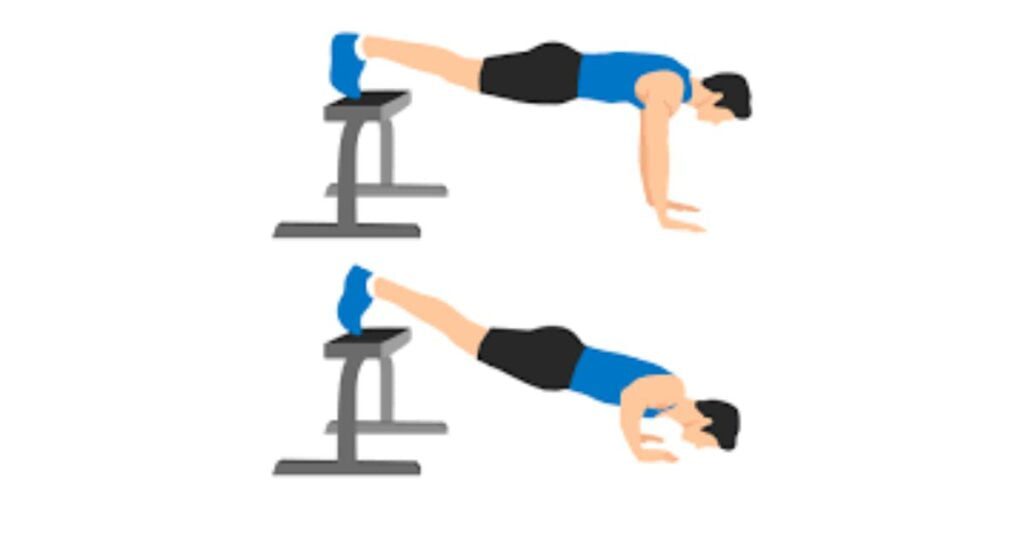
Steps:
- Assume a push-up position with your feet elevated on a surface.
- Lower your body, then push back up.
Benefits:
- Targets the triceps with added intensity.
- Engages the chest and shoulders.
- Strengthens the triceps and upper body.
Spiderman Push-Ups (with tricep emphasis):
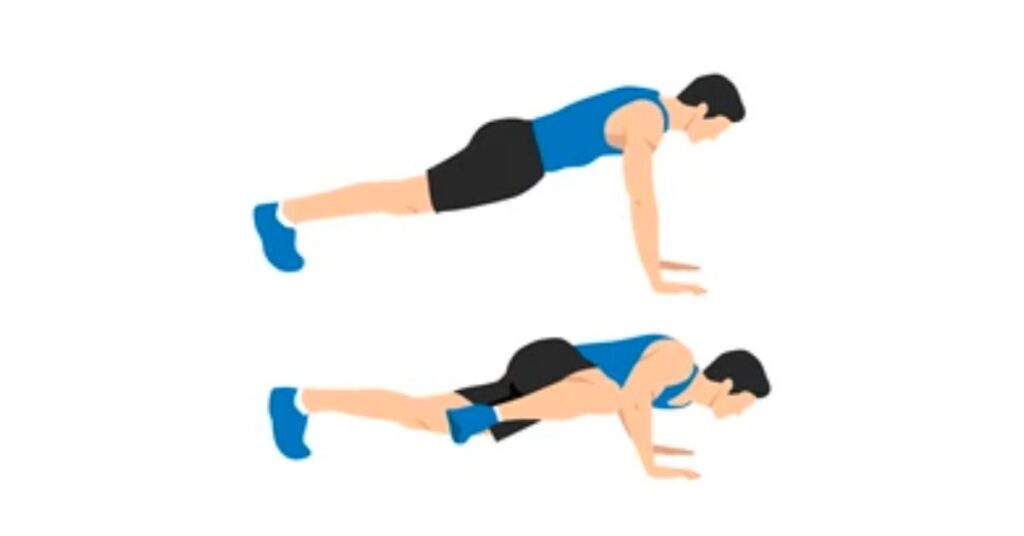
Steps:
- Perform a push-up.
- As you lower yourself down, bring one knee to the same-side elbow.
- Push back up and switch sides with each rep.
Benefits:
- Engages the triceps and enhances core stability.
- Tones the chest and shoulders.
- Improves balance and coordination.
Planche Leans:
Steps:
- Begin in a push-up position.
- Shift your weight forward, leaning your shoulders over your wrists.
Benefits:
- Focuses on triceps and shoulder strength.
- Challenges core stability.
- Enhances upper body control and power.
Tips for Effective Calisthenics Arms Workouts
1. Consistency is Key: The path to stronger arms with calisthenics lies in consistency. Set a workout schedule that you can stick to, whether it’s three times a week or more. Regularity is your best friend on this journey.
2. Focus on Form: Quality over quantity, always. Correct form not only maximizes results but also minimizes the risk of injury. Ensure your body is aligned, and the movement is controlled during each rep.
3. Mix It Up: Keep your workouts interesting by varying exercises. Experiment with different push-up variations, dips, and isometric holds. The more you challenge your muscles, the better the results.
4. Progressive Overload: To see continuous improvement, gradually increase the intensity of your exercises. This can be done by adding more reps, adjusting leverage, or trying advanced variations.
5. Don’t Ignore Nutrition: Building strong arms also involves fueling your body properly. Ensure you’re getting enough protein to support muscle growth and overall nutrition for energy.
6. Rest and Recovery: Your muscles need time to recover and grow stronger. Allow at least 48 hours between intense arm workouts. Proper sleep and hydration play a crucial role in recovery.
7. Warm-Up Smart: A dynamic warm-up gets your blood flowing and prepares your muscles for action. Incorporate arm circles, wrist rotations, and light cardio to reduce the risk of injury.
8. Listen to Your Body: If something doesn’t feel right, it probably isn’t. Pain beyond the normal muscle burn is a signal to stop. Don’t push too hard, too fast, and respect your body’s limits.
9. Track Your Progress: Keep a workout journal or use a fitness app to record your reps and sets. It’s motivating to see how far you’ve come and where you can improve.
10. Stay Hydrated: Muscles need water to function optimally. Dehydration can lead to decreased performance and increased risk of cramps, so drink up.
11. Incorporate Rest Days: Your body needs time to rest and repair. Rest days are as crucial as workout days, allowing muscles to recover and grow stronger.
12. Patience is a Virtue: Building impressive arm strength and definition takes time. Be patient, and remember that progress is a journey, not a destination.
Common Mistakes to Avoid in Bodyweight Workouts
Let’s delve into common missteps to avoid when embarking on bodyweight workouts. These insights will enable you to optimize the efficiency of your fitness regimen while mitigating the potential for setbacks.
- Sacrificing Form for Repetitions: One prevalent pitfall is rushing through exercises without maintaining proper form. Prioritize upholding correct posture and control throughout every motion. Neglecting form not only diminishes workout effectiveness but also heightens the risk of injury.
- Skipping Warm-Up: Disregarding warm-up routines is a substantial misjudgment. A thorough warm-up enhances blood circulation to your muscles, curbs the likelihood of strains, and prepares your body for the demands of bodyweight exercises.
- Overlooking Progression: Numerous enthusiasts dive headfirst into advanced exercises without mastering the fundamentals. Gradual progression is pivotal for fortifying strength and preventing injuries. Begin with foundational exercises and gradually advance to more demanding maneuvers.
- Neglecting Recovery: Overtraining is a widespread pitfall. Your muscles necessitate adequate time for recuperation and growth. Incorporate rest days into your routine and heed your body’s signals of fatigue or overexertion.
- Monotony in Routine: Repeating the same exercises incessantly can lead to plateaus and monotony. Inject an array of bodyweight movements into your workouts to keep them engaging and target diverse muscle groups.
- Goal Setting Neglect: Defined fitness objectives confer purpose to your workouts. Whether your aim is building strength, enhancing endurance, or sculpting specific areas, setting goals sustains motivation and facilitates progress measurement.
- Ignoring Nutritional Aspect: Exercise and nutrition are interdependent. Failing to furnish your body with essential nutrients can impede your progress. Ensure that your workouts are fueled by a balanced diet.
- Underestimating Recovery Strategies: Recovery is as pivotal as the workout itself. Integrate strategies such as stretching, foam rolling, and proper hydration to expedite muscle recovery and alleviate post-workout soreness.
- Inattentiveness to Breathing: Proper breathing is frequently underrated. Ensure that you breathe correctly during exercises to optimize oxygen flow to your muscles and sustain endurance.
- Adapting to Injuries: Injuries are an unfortunate reality, but they need not derail your progress entirely. Seek guidance from a healthcare professional on how to tailor your workouts during the recovery phase.
- Impatience: Building a robust, toned physique is not an overnight feat, much like Rome’s construction. Impatience can lead to disillusionment and burnout. Exercise patience and trust in the process.
- Core Exercises Neglect: Core strength forms the bedrock of bodyweight workouts. Do not overlook exercises that target your core muscles, such as planks and leg raises.
In Closing
To conclude, your expedition into the realm of bodyweight workouts is a thrilling and empowering venture. The simplicity of these exercises, liberation from equipment, and the potential to sculpt a more robust, leaner, and resilient you are just a few steps away.
Remember, consistency stands as your ultimate ally. With each push-up, pull-up, or plank, you are not merely fortifying physical strength; you are forging mental resolve and determination.
Mistakes are an integral facet of the journey, and the wisdom gleaned from them is priceless. Hence, embrace the learning curve, focus on impeccable form, and heed your body’s signals.
Balancing challenge and recuperation optimally will unlock your full potential in the domain of bodyweight workouts. Thus, don your sneakers, lay out your mat, and embark on this incredible odyssey toward a healthier, more vibrant you. Your body weight, determination, and aspirations are all you require.
Let your body serve as your gym, and allow your inner strength to radiate. Welcome to the world of bodyweight workouts, where possibilities are boundless, and tangible results await.

